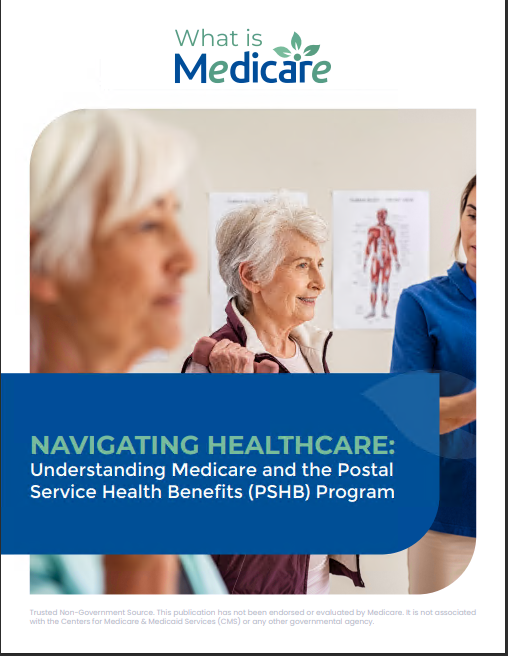Key Takeaways:
-
Understanding the basics of each Medicare part can help you make smarter choices, reduce healthcare expenses, and avoid unnecessary costs.
-
Knowing how Medicare Parts A, B, C, and D work together allows you to select the coverage that meets your needs without paying for extras you don’t need.
Medicare Demystified: Breaking Down the Parts
Navigating Medicare can feel overwhelming at first, but understanding what each part covers will give you clarity and control. Medicare is divided into four parts—A, B, C, and D. Each serves a specific purpose, from hospital stays to prescription drugs, and your choices can significantly impact your healthcare costs and access. Let’s break it all down, one piece at a time, so you can feel confident about your decisions.
Part A: Your Foundation for Hospital Coverage
Medicare Part A is often called “hospital insurance” because it covers inpatient care. This includes stays in hospitals, skilled nursing facilities, and hospice care. It’s a critical component of Medicare, particularly for those who expect to need significant inpatient care in their healthcare journey.
What Does Part A Cover?
-
Inpatient Hospital Care: Room, meals, and necessary services during a hospital stay are included under Part A. However, luxury items like private rooms may not be covered unless medically necessary.
-
Skilled Nursing Facility Care: This provides essential short-term rehabilitation services after a hospital stay of at least three consecutive days. Think of it as a step-down care option before returning home.
-
Hospice Care: End-of-life care that focuses on comfort and quality of life rather than curing an illness is a crucial component of Part A coverage.
-
Home Health Care: While limited, this includes intermittent skilled care services for homebound individuals who require medical treatment.
Costs to Consider
For most people, Part A is premium-free if you’ve worked and paid Medicare taxes for at least 10 years. However, it’s essential to understand other costs like deductibles and coinsurance:
-
The inpatient deductible for 2025 is $1,676 per benefit period. This amount resets for each new benefit period, which starts after 60 consecutive days without hospital or skilled nursing care.
-
Daily coinsurance costs begin at $419 per day after the first 60 days of hospitalization and increase substantially for extended stays.
Planning for these expenses is crucial, especially if hospital visits are a significant part of your anticipated care.
Part B: Covering Your Everyday Medical Needs
Part B, or “medical insurance,” handles outpatient services. It’s arguably the most frequently used Medicare component because it applies to routine doctor visits, preventive screenings, and ongoing outpatient treatments.
What Does Part B Cover?
-
Doctor Visits: Whether you’re seeing your primary care physician or consulting with a specialist, Part B takes care of these appointments.
-
Preventive Services: Screenings for various health conditions, including diabetes, cancer, and cardiovascular disease, are covered at no additional cost.
-
Durable Medical Equipment: Items such as walkers, wheelchairs, and oxygen equipment fall under Part B coverage, as long as they are deemed medically necessary.
-
Outpatient Services: Emergency room visits, outpatient surgeries, and diagnostic tests like MRIs and X-rays are included.
Costs to Expect
The monthly premium for Part B in 2025 is $185, and it comes with an annual deductible of $257. After meeting the deductible, Medicare covers 80% of the costs for approved services, leaving you responsible for the remaining 20%. Keep in mind:
-
There is no cap on out-of-pocket spending under Original Medicare, making supplemental coverage an important consideration.
-
Late enrollment in Part B can result in penalties that increase your premiums by 10% for every 12-month period you were eligible but not enrolled.
Part C: The All-in-One Option
Medicare Advantage, or Part C, is a private insurance alternative that bundles the benefits of Parts A and B, often with additional perks. This comprehensive option is ideal for individuals who prefer managed care plans.
Why Choose Part C?
-
Extra Benefits: Many Medicare Advantage plans include dental, vision, and hearing coverage, which Original Medicare does not.
-
Prescription Drug Coverage: These plans often include Part D, simplifying your healthcare by combining everything into one package.
-
Cost Predictability: With annual out-of-pocket maximums, Part C provides a financial safety net that Original Medicare lacks.
Things to Keep in Mind
While Medicare Advantage plans must cover the same services as Original Medicare, the costs, provider networks, and additional benefits can vary significantly. Be sure to review all aspects of the plan, especially if you prefer a wider choice of providers.
Part D: Prescription Drug Coverage
Medicare Part D focuses on reducing the costs of prescription medications, making it an essential addition for most beneficiaries.
How Does Part D Work?
-
Formulary: Each plan has a unique list of covered drugs. These are divided into tiers, with generic drugs typically costing less than brand-name options.
-
Phases of Coverage:
-
Deductible Phase: In 2025, you pay up to $590 before the plan begins to share the cost.
-
Initial Coverage Phase: After meeting the deductible, your costs are shared with the plan until total drug expenses reach a predetermined limit.
-
Catastrophic Coverage: Once your out-of-pocket spending hits $2,000, you enter the catastrophic phase, where costs significantly decrease.
-
Tips for Choosing Part D
When selecting a plan, consider both your current medication needs and potential changes. Check each plan’s formulary to ensure your prescriptions are covered at reasonable costs.
Coordinating Parts A, B, C, and D
Understanding how the different parts of Medicare work together allows you to optimize your coverage and minimize expenses.
Original Medicare (Parts A and B)
Combining these two parts provides a solid foundation for most healthcare needs, but gaps exist. For example:
-
Neither dental nor vision services are covered.
-
There is no annual limit on out-of-pocket costs.
Enhancing Original Medicare
To cover prescription drugs, you can pair Original Medicare with a standalone Part D plan. This approach offers flexibility, especially if you’re comfortable managing multiple plans.
Choosing Medicare Advantage (Part C)
This bundled option streamlines your coverage but may restrict your choice of healthcare providers to a network. It’s a convenient option for those who prefer an all-in-one solution.
Enrollment Periods: Timing Is Everything
Enrolling at the right time ensures seamless coverage and helps you avoid costly penalties.
Initial Enrollment Period (IEP)
This 7-month window begins three months before your 65th birthday, includes your birth month, and ends three months after. Missing this opportunity may result in penalties that persist for as long as you have Medicare.
General Enrollment Period (GEP)
From January 1 to March 31 each year, this period allows you to enroll in Part B if you missed your IEP. Coverage begins on July 1.
Annual Enrollment Period (AEP)
Between October 15 and December 7, you can switch plans or make changes to your coverage. Any updates take effect on January 1 of the following year.
Special Enrollment Periods (SEP)
These periods are triggered by life events such as losing employer coverage or relocating. SEPs allow you to enroll or change plans without penalties.
Tips for Maximizing Your Medicare Benefits
-
Review Your Coverage: Plans and costs change annually. Reassess your options during the Annual Enrollment Period.
-
Avoid Penalties: Enroll in Parts B and D on time to dodge lifelong penalties.
-
Take Advantage of Preventive Services: Use free screenings and wellness visits to stay ahead of health issues.
-
Track Your Costs: Be aware of deductibles, premiums, and coinsurance to better manage your budget.
Why Understanding Medicare Matters
Choosing the right Medicare coverage isn’t just about saving money—it’s about ensuring peace of mind and access to the care you need. By understanding what each part offers, you’re in a stronger position to tailor your healthcare to your unique needs and priorities.










